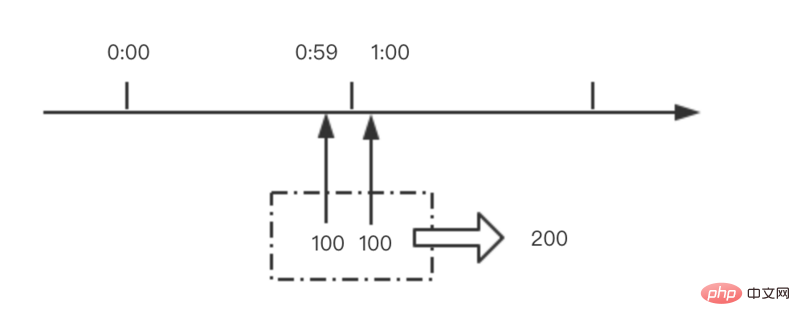
The working principle and code examples of Nginx load balancing algorithm fair
Introduction:
In high concurrency scenarios, a single server may not be able to satisfy user requests. In order to improve the processing power and stability of the server, load balancing technology is often used. As a high-performance web server and reverse proxy server, Nginx's built-in load balancing module provides a variety of algorithms to choose from. The "fair" algorithm is a dynamic algorithm that is scheduled based on the processing time of the request. This article will provide an in-depth understanding of the working principle of the Nginx load balancing algorithm fair and provide specific code examples.
1. The working principle of Nginx load balancing algorithm fair
The load balancing module of Nginx implements a variety of load balancing algorithms, of which the fair algorithm is one of them. The core idea of the fair algorithm is to dynamically schedule requests based on the average response time of each background server. The specific working principle is as follows:
- First visit: When a user visits for the first time, Nginx will forward the request to different backend servers in sequence in a polling manner.
- Statistical processing time: Each backend server will send processing time information to Nginx after responding to the request.
- Average response time calculation: Nginx will calculate the average response time based on the processing time statistics of each server.
- Response time weight calculation: Nginx will calculate the corresponding weight based on the average response time of each server. The longer the response time, the lower the weight.
- Request scheduling: When a new request arrives, Nginx will select the appropriate backend server to forward the request based on the weight of the server.
- Dynamic adjustment: When the response time of the background server changes, Nginx will recalculate the average response time based on the new processing time and adjust the weight accordingly.
2. Code example of Nginx load balancing algorithm fair
In order to demonstrate the working principle of Nginx load balancing algorithm fair, the following is an example of an Nginx configuration file:
http {
upstream backend {
fair; server 192.168.1.1; server 192.168.1.2; server 192.168.1.3;
}
server {
listen 80;
server_name example.com;
location / {
proxy_pass http://backend;
}}
}
In the above example, by The upstream directive defines a background server group backend and specifies the use of the fair algorithm for load balancing. Among them, the server directive is used to specify the IP address of the backend server. In an actual production environment, more servers can be added as needed.
In the server block, use the location directive to configure the request forwarding rules. In the example, all requests will be forwarded to the backend server group for processing.
3. Summary
As a high-performance web server and reverse proxy server, Nginx’s built-in load balancing module provides a variety of algorithms to choose from. The fair algorithm is a dynamic algorithm that schedules based on the processing time of the request. It dynamically adjusts the weight of request forwarding by counting the average response time of each background server. Through the introduction of this article, we have an in-depth understanding of the working principle of Nginx load balancing algorithm fair and give specific code examples.
Using Nginx load balancing algorithm fair can improve the processing power and stability of the server, thereby improving the user experience. In practical applications, we can choose appropriate load balancing algorithms based on specific business needs to meet the needs of different scenarios.
The above is the detailed content of Understand how Nginx load balancing algorithm fair works. For more information, please follow other related articles on the PHP Chinese website!
 内存飙升!记一次nginx拦截爬虫Mar 30, 2023 pm 04:35 PM
内存飙升!记一次nginx拦截爬虫Mar 30, 2023 pm 04:35 PM本篇文章给大家带来了关于nginx的相关知识,其中主要介绍了nginx拦截爬虫相关的,感兴趣的朋友下面一起来看一下吧,希望对大家有帮助。
 nginx限流模块源码分析May 11, 2023 pm 06:16 PM
nginx限流模块源码分析May 11, 2023 pm 06:16 PM高并发系统有三把利器:缓存、降级和限流;限流的目的是通过对并发访问/请求进行限速来保护系统,一旦达到限制速率则可以拒绝服务(定向到错误页)、排队等待(秒杀)、降级(返回兜底数据或默认数据);高并发系统常见的限流有:限制总并发数(数据库连接池)、限制瞬时并发数(如nginx的limit_conn模块,用来限制瞬时并发连接数)、限制时间窗口内的平均速率(nginx的limit_req模块,用来限制每秒的平均速率);另外还可以根据网络连接数、网络流量、cpu或内存负载等来限流。1.限流算法最简单粗暴的
 nginx+rsync+inotify怎么配置实现负载均衡May 11, 2023 pm 03:37 PM
nginx+rsync+inotify怎么配置实现负载均衡May 11, 2023 pm 03:37 PM实验环境前端nginx:ip192.168.6.242,对后端的wordpress网站做反向代理实现复杂均衡后端nginx:ip192.168.6.36,192.168.6.205都部署wordpress,并使用相同的数据库1、在后端的两个wordpress上配置rsync+inotify,两服务器都开启rsync服务,并且通过inotify分别向对方同步数据下面配置192.168.6.205这台服务器vim/etc/rsyncd.confuid=nginxgid=nginxport=873ho
 nginx php403错误怎么解决Nov 23, 2022 am 09:59 AM
nginx php403错误怎么解决Nov 23, 2022 am 09:59 AMnginx php403错误的解决办法:1、修改文件权限或开启selinux;2、修改php-fpm.conf,加入需要的文件扩展名;3、修改php.ini内容为“cgi.fix_pathinfo = 0”;4、重启php-fpm即可。
 如何解决跨域?常见解决方案浅析Apr 25, 2023 pm 07:57 PM
如何解决跨域?常见解决方案浅析Apr 25, 2023 pm 07:57 PM跨域是开发中经常会遇到的一个场景,也是面试中经常会讨论的一个问题。掌握常见的跨域解决方案及其背后的原理,不仅可以提高我们的开发效率,还能在面试中表现的更加
 nginx部署react刷新404怎么办Jan 03, 2023 pm 01:41 PM
nginx部署react刷新404怎么办Jan 03, 2023 pm 01:41 PMnginx部署react刷新404的解决办法:1、修改Nginx配置为“server {listen 80;server_name https://www.xxx.com;location / {root xxx;index index.html index.htm;...}”;2、刷新路由,按当前路径去nginx加载页面即可。
 Linux系统下如何为Nginx安装多版本PHPMay 11, 2023 pm 07:34 PM
Linux系统下如何为Nginx安装多版本PHPMay 11, 2023 pm 07:34 PMlinux版本:64位centos6.4nginx版本:nginx1.8.0php版本:php5.5.28&php5.4.44注意假如php5.5是主版本已经安装在/usr/local/php目录下,那么再安装其他版本的php再指定不同安装目录即可。安装php#wgethttp://cn2.php.net/get/php-5.4.44.tar.gz/from/this/mirror#tarzxvfphp-5.4.44.tar.gz#cdphp-5.4.44#./configure--pr
 nginx怎么禁止访问phpNov 22, 2022 am 09:52 AM
nginx怎么禁止访问phpNov 22, 2022 am 09:52 AMnginx禁止访问php的方法:1、配置nginx,禁止解析指定目录下的指定程序;2、将“location ~^/images/.*\.(php|php5|sh|pl|py)${deny all...}”语句放置在server标签内即可。


Hot AI Tools

Undresser.AI Undress
AI-powered app for creating realistic nude photos

AI Clothes Remover
Online AI tool for removing clothes from photos.

Undress AI Tool
Undress images for free

Clothoff.io
AI clothes remover

AI Hentai Generator
Generate AI Hentai for free.

Hot Article

Hot Tools

Dreamweaver Mac version
Visual web development tools

SublimeText3 Chinese version
Chinese version, very easy to use

SAP NetWeaver Server Adapter for Eclipse
Integrate Eclipse with SAP NetWeaver application server.

Safe Exam Browser
Safe Exam Browser is a secure browser environment for taking online exams securely. This software turns any computer into a secure workstation. It controls access to any utility and prevents students from using unauthorized resources.

VSCode Windows 64-bit Download
A free and powerful IDE editor launched by Microsoft






